Chromatic Detection
Chromogenic medium for enumeration and identification of microorganisms from urinary specimens and food.
Chromatic Detection allows an easy and reliable differentiation of a wide range of species, complete in case of urine samples. The addition of various antibiotics to the Chromatic Detection medium is also useful for the detection of critical nosocomial and multiple resistant microorganisms.
| Packaging | Ref. |
|---|---|
|
20 plates |
11611 |
|
6 bottles x 100 mL |
481130 |
|
500 g |
610612 |
|
100 g |
620612 |
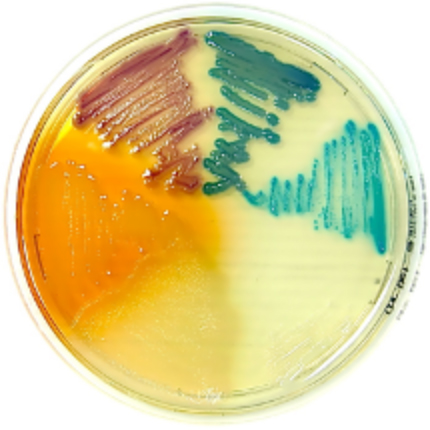
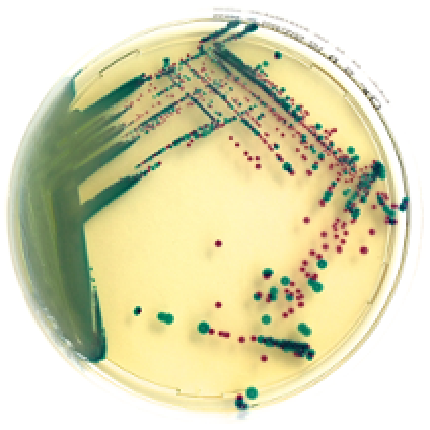
Chromatic Staph aureus
Selective chromogenic medium for isolating Staphylococcus aureus.
Staphylococcus aureus is a one of the most commonly found bacteria. Staphylococcus aureus can be pyogenic and toxinogenic, it is a commensal human germ (half of the population hosts S. aureus). It is also often detected in in clinical specimens and food. Staphylococcus aureus today is a serious and diffused health problem.
| Packaging | Ref. |
|---|---|
|
20 plates |
11616 |
|
6 bottles x 100 mL |
481160 |
|
500 g |
610616 |
|
100 g |
620616 |
|
Chromatic Staph aureus supplement |
81085 |
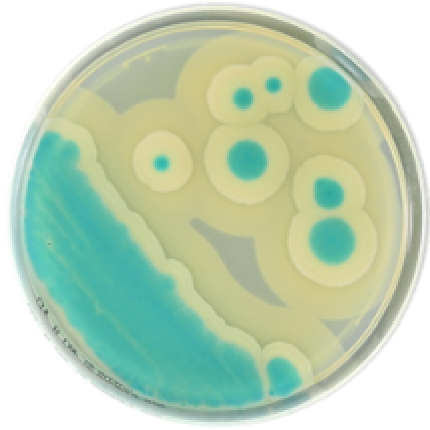
Chromatic Bacillus cereus
Selective chromogenic agar for isolating and differentiating Bacillus cereus from food samples.
Thanks to its ability to form spores, Bacillus cereus is an organism found in soil, vegetables, animal hair, water and sediments, therefore often associated to foodborne diseases such as vomit and diarrhea.
Chromatic Bacillus cereus Agar allows the growth of Bacillus cereus in blue/green colonies. Antibiotic compounds included in the medium inhibit the majority of Gram-negative organisms and many Gram-positive bacteria including Staphylococcus aureus, enterococci and most of bacilli other than Bacillus cereus.
| Packaging | Ref. |
|---|---|
|
20 plates |
11628 |
Chromatic Salmonella
Selective chromogenic medium for isolating and differentiating Salmonella spp.
Salmonella spp. is found in the environment and in cold- and warm-blooded animals including humans. Salmonella spp. causes typhoid fever, paratyphoid fever, and foodborne illness.
Salmonella infections are zoonotic and can be transferred between humans and nonhuman animals. Infections are also caused by ingestion of contaminated food and are particularly hazardous in older adults and those who are immunocompromised.
| Packaging | Ref. |
|---|---|
|
20 plates |
11614 |
|
6 bottles x 100 mL |
481140 |
|
500 g |
610611 |
|
100 g |
620611 |
|
TWEEN 20 Supplement |
80032 |
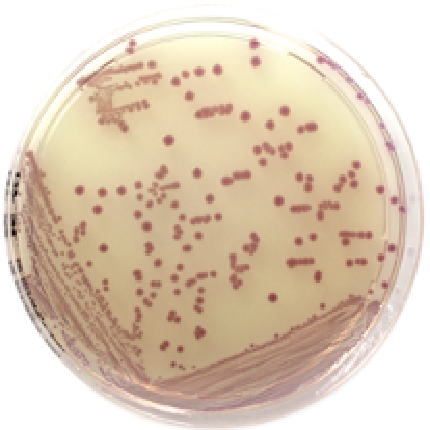
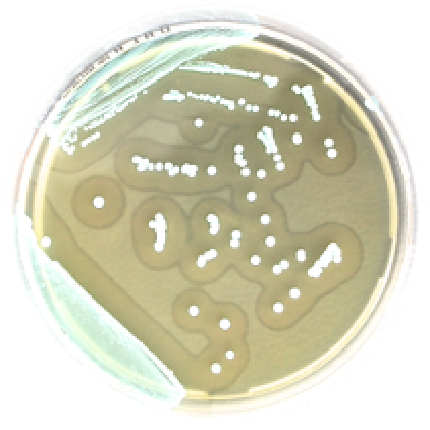
O.A. Listeria agar
Selective differential chromogenic medium for detecting and counting Listeria monocytogenes from food samples (ISO 11290).
Listeria monocytogenes is one of the most virulent foodborne pathogens, responsible for an increasing amount of deaths worldwide annually. Listeriosis is the major cause of death among foodborne bacterial pathogens.
Infections by Listeria monocytogenes can happen in any stages of food processing. Listeria monocytogenes can be found in the fecal matter, soil and waste waters.
| Packaging | Ref. |
|---|---|
|
20 plates |
10620 |
|
500 g |
610601 |
|
100 g |
620601 |
|
O.A. LISTERIA supplement |
81074 |
Chromatic Coliform Agar ISO
Chromogenic medium for detection and enumeration of E. coli and coliform bacteria in water, according to ISO 9308-1.
Chromatic Coliform Agar ISO is the new culture medium for enumerating coliform bacteria and E. coli in water samples with low bacterial background flora to replace Lactose TTC agar in accordance to the ISO 9308-1 (effective on Sept 16th, 2014).
Chromatic Coliform Agar ISO contains enzymes that allow the simultaneous identification of several microorganisms in 24 hours, by defined colors of the colonies. Coliform bacteria and E. coli are potential pathogens found in samples with low background flora such as drinking water, disinfected pool water and finished water from drinking water treatment plants.
| Packaging | Ref. |
|---|---|
|
20 plates |
11630 |
|
6 bottles x 100 mL |
481190 |
|
500 g |
610630 |
|
20 plates 60 mm |
163852 |
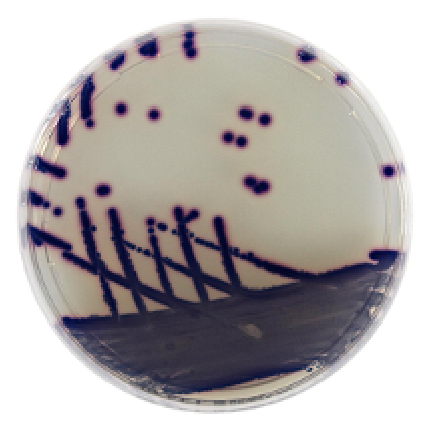
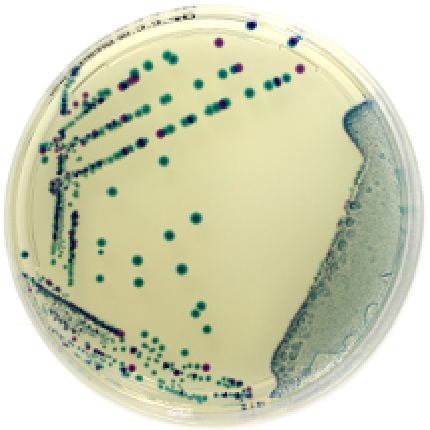
Chromatic Coli Coliform
Selective chromogenic medium for E. coli and coliforms isolation and enumeration in foods and water.
The detection of E. coli and coliforms is one of the main criteria to define the quality of water and food.
Drinking water can be contaminated by E. coli following a period of intense rains, or because of an insufficient treatment.
Coliforms, lactose fermenting Enterobacteriacae, are bacteria found in the intestinal flora of blooded animals, in soil and water. Escherichia coli and thermotolerant Klebsiella are commonly responsible of fecal contaminations, through animal waste.
| Packaging | Ref. |
|---|---|
|
20 plates |
11613 |
|
6 bottles x 100 mL |
481120 |
|
500 g |
610610 |
|
100 g |
620610 |
|
20 plates 60 mm |
163702 |
Chromatic E.coli O157
Selective chromogenic medium for detecting E. coli O157.
Escherichia coli O157:H7 causes severe foodborne illness, and is a member of a class of pathogenic E. coli known as verocytotoxin producing E. coli (VTEC).
Infection often leads to hemorrhagic diarrhea, and occasionally to kidney failure, especially in young children and elderly persons. Transmission is via the fecal-oral route, and most illness has been associated with eating undercooked, contaminated ground beef, swimming in or drinking contaminated water, and eating contaminated vegetables.
| Packaging | Ref. |
|---|---|
|
20 plates |
11610 |
|
500 g |
610614 |
|
100 g |
620614 |
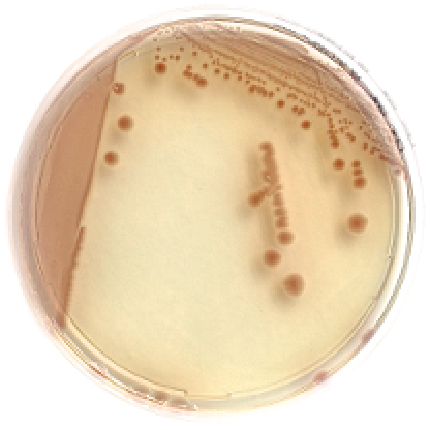
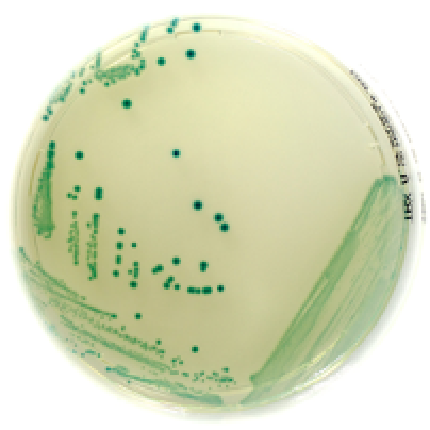
TBX agar
Selective chromogenic medium for detecting and enumerating E. coli in food according to ISO 16649.
X-glucuronide, contained in the TBX agar formulation, is the chromogenic agent that allows the determination of the ?-D-glucuronidase activity, which is a highly specific enzyme for E. coli. Gram-positive bacteria are inhibited by bile salts.
| Packaging | Ref. |
|---|---|
|
20 plates |
10522 |
|
6 bottles x 100 mL |
481170 |
|
500 g |
610224 |
|
100 g |
620224 |
Chromatic Vibrio
Chromogenic medium isolating and differentiating V. parahaemolyticus, V. vulnificus and V. cholerae.
V. cholerae, V. parahaemolyticus and V. vulnificus have the potential to be foodborne, and are most often associated with the consumption of raw, or undercooked, shellfish. V. cholerae is the cause of outbreaks and epidemics of cholera, V. parahaemolyticus is the species most frequently associated with foodborne disease in humans, V. vulnificus is an occasional cause of serious infections especially in case of wound contact in the marine environment that can cause primary septicaemia in vulnerable individuals with consequent high mortality rate.
| Packaging | Ref. |
|---|---|
|
20 plates |
11633 |
|
500 g |
610633 |
|
100 g |
620633 |
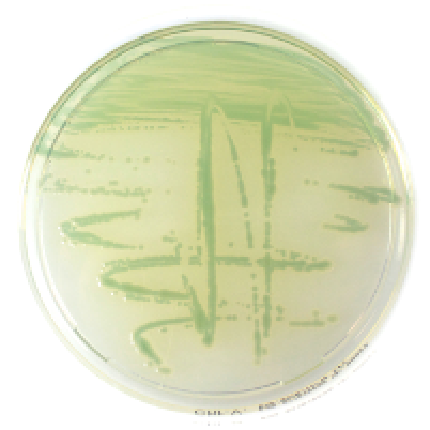
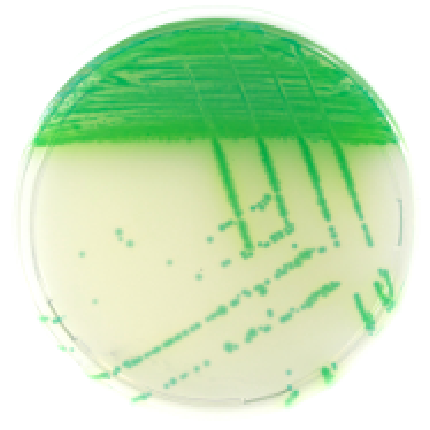
Chromatic Pseudomonas
Chromogenic medium for detection of Pseudomonas spp. from clinical specimens and environmental samples.
Pseudomonas are ubiquitous bacteria, able to grow at low temperature (psychrophilic strains) and consequently to contaminate foodstuff and beverages stored in the refrigerator. Pseudomonas strains can occasionally be isolated from the intestinal flora of humans or animals. P. aeruginosa has developed resistance to many antibiotics and is rated as one of the main causes of intensive care unit (ICU)–related pneumonia.
| Packaging | Ref. |
|---|---|
|
20 plates |
11635 |

